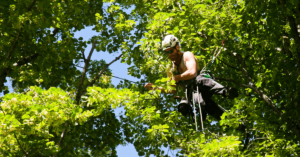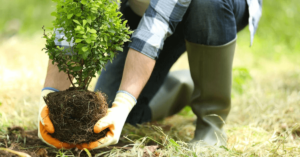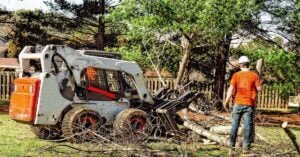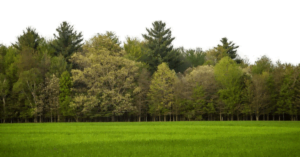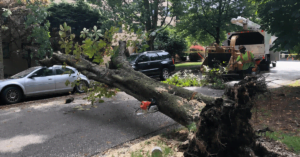Tree bugs, also known as insects, can cause damage to trees and disrupt their growth. To maintain a healthy tree and prevent infestations, it’s important to understand how to eliminate tree bugs effectively.
In this guide, we will explore various methods for effectively getting rid of tree bugs, including natural and chemical options. We will also explore some tips for preventing infestations in the future. So read on to learn more about eliminating tree bugs.
4 Tips To Get Rid of Tree Bugs
If you have tree bugs in your yard, it is important to take action quickly so they do not spread. Here are some steps you can take to get rid of tree bugs:
1) Inspect your trees for signs of infestation
Common signs include discolored leaves, sticky sap on the branches and small mounds around the base of the tree. If you find any of these signs it is important to take action immediately.
2) Prune-affected branches
Tree bugs tend to congregate in certain areas, so it is important to prune any affected branches. Pruning will also help get rid of some of the tree bugs and make your tree look more aesthetically pleasing.
3) Use insecticide
Insecticides can be used to target specific types of tree bugs, such as aphids, spider mites and scale insects. Be sure to choose the right insecticide for the type of bug you have and follow the directions closely.
4) Monitor your tree
Even after taking steps to get rid of tree bugs, it is important to monitor your trees for signs of infestation. If you notice any new signs of infestation, take action right away.
By following these steps, you can help get rid of tree bugs and keep your trees healthy. Remember to inspect your trees regularly and prune any affected branches as soon as possible.
Physical Control Measures To Get Rid Of Tree Bugs
Physical control measures can be effective in managing tree bug infestations, but the ideal approach depends on the specific species and extent of the infestation.
Some of the more common physical control methods include
- Manually removing: This method is useful in the early stages of infestation before the bugs have had time to spread. Handpicking or pruning infested twigs and branches is the most direct way to remove tree bugs from an infected area. Care should be taken when removing insects to avoid spreading them elsewhere in the environment.
- Trapping: Use sticky traps or light traps to attract and capture adult insects before they can lay eggs.
- Dormant oil sprays: The application of dormant oil in late winter/early spring can help suffocate overwintering insect eggs and larvae.
- Washing the tree with water: Spraying the tree with a strong stream of water can help knock off adult insects and eggs. This method is most effective in the early stages of infestation.
- Heat, cold and electrical treatments: Heat and cold treatments can be used to kill insect eggs and larvae, while electric shock treatments can be effective for certain species of tree bugs. These methods should be used with caution and only by experienced professionals.
- Cultural controls: Practices such as proper fertilization, regular pruning and avoiding overcrowding can help create an environment that is less conducive to infestation.
- Burning: Burning infested plant material is a drastic but sometimes necessary measure to control certain species of tree bugs. This should only be done by experienced personnel and with the proper safety precautions in place.
- Neem oil: The application of neem oil can help repel certain species of tree bugs and disrupt the insect’s life cycle.
- Horticultural Oil: This is a petroleum-based product that is sprayed onto leaves and branches of trees to smother the bugs living on them. Horticultural oil can be an effective way of eliminating tree bugs, as it is not as toxic to beneficial insects, such as bees.
Chemical Control Measures to Get Rid Of Tree Bugs
- Biological Control: This involves using natural predators to control the tree bug population. Examples of this include releasing beneficial insects into infested areas, such as ladybugs and parasitic wasps that feed on specific types of tree bugs.
- Insecticides: Spraying insecticides is a common chemical method of controlling tree bugs. These chemicals are toxic to the tree bug and can result in effective population control if used properly.
- Pesticides: This is a chemical method of controlling tree bugs, but it should be used with caution. Pesticides are toxic and can cause harm to beneficial insects, as well as the surrounding environment. Before using pesticides, always read the label carefully and follow all directions.
- Soap Spray Solutions: This is another common chemical control measure that involves mixing dishwashing soap and water in a spray bottle and spraying it onto trees to control the tree bug population. The soapy solution coats the bugs and suffocates them, resulting in effective pest control.
- Attractants: This involves using chemicals to attract certain types of beneficial insects, such as predatory wasps, that can help control the tree bug population.
All of these methods can be used to help keep tree bugs away and maintain a healthy tree.
How to identify the type of tree bugs?
Tree bugs can be difficult to identify due to the wide variety of species and individual differences between them. To identify the type of tree bug, look for identifying traits such as its size, shape, coloring and behavior. There are a few common types of tree bugs.
1) Aphids
Aphids are typically small (1/16th to 1/8th inch long), oval in shape and come in various colors such as green, yellow, black and brown. They can be found on the undersides of leaves or stems.
2) Whiteflies
Whiteflies are tiny white flying insects that feed on plant sap. They produce a powdery substance on the leaves which gives them a silvery appearance. This can be seen with the naked eye as they flutter around the leaves in large numbers.
3) Scale Insects
Scale insects are usually small, flat and oval-shaped with a scale-like covering. They come in various colors including pink, brown, yellow and black. These insects feed on the sap of trees and usually appear as small bumps or waxy patches on the leaves.
4) Leafhoppers
Leafhoppers are green or brown and have wedge-shaped bodies that range from 1/8th to 1/4 inch long. They feed on the sap of tree leaves and can often be seen jumping or flying around branches and leaves.
5) Wood Borers
Wood borers are usually seen as small, round or oval-shaped holes in the bark of trees. These insects are typically white, brown or black in color and range from 1/8th to 1 inch long. They feed on wood and can cause noticeable damage to trees over time.
6) Gypsy moths
Gypsy moths are a common tree pest that can be identified by their large, grayish-brown wings and reddish bodies. These moths feed on the leaves of trees and can cause extensive damage in large numbers.
With a little bit of research and observation, you should be able to identify the type of tree bug infesting your trees. If you have any further questions or need help identifying the type of tree bug, it is best to contact a professional pest control service.
FAQs – Get Rid Of Tree Bugs
What damage do tree bugs cause to trees?
Tree bugs can cause a range of damage to trees, from minor leaf feeding to serious structural damage. Some tree bugs are sap-sucking insects that feed on the leaves and twigs of trees, weakening them and making them more vulnerable to disease or other pests.
Other tree bugs may bore into the bark or wood of a tree, creating tunnels that weaken the tree’s structure or breed within a tree causing rot and decay. In some cases, tree bugs can even kill a tree if their numbers are high enough.
It is important to identify and address any infestations of tree bugs quickly to minimize damage caused to the tree.
Can tree bugs be harmful to humans?
In most cases, tree bugs are not harmful to humans. However, there are some species of tree bugs that can bite or sting people and cause various allergic reactions. Moreover, certain types of tree bugs may carry diseases that can be transmitted to humans if they come into contact with the bug’s saliva or feces. Therefore, it is important to wear protective clothing, such as long pants and long sleeves, when working outdoors.
Additionally, it is advised to avoid using any type of pesticide on trees if tree bugs are present. Pesticides can be dangerous for humans and can cause more harm than good in the long run. It is better to use natural methods.
How often should I inspect my trees for tree bugs?
It’s recommended to inspect trees regularly, especially during the growing season when bugs are most active. Generally, you should be inspecting your trees for tree bugs at least once a month.
If you suspect an issue with your tree or notice anything out of the ordinary, contact a certified arborist as soon as possible. They will be able to diagnose the problem and recommend an appropriate course of treatment for your trees.
Can tree bugs spread from one tree to another?
Yes, tree bugs can spread from one tree to another, depending on the type of bug. Certain species of boring insects, such as beetles and moths, can spread from tree to tree by laying eggs inside the bark. Sap-feeding and wood-boring insects can also spread through the exchange of infected wood or bark chips.
Additionally, some species of tree bugs such as aphids and scale insects, can spread through the air or by being carried on animals. As a result, trees that are near each other are more likely to become infected with tree bugs.
Consequence
If you have tree bugs, don’t worry. You can get rid of them with a little time and effort. To get rid of tree bugs, a combination of physical removal, natural predators, chemical pesticides and proper tree care can be effective. It is important to identify the specific type of bug and target the solution accordingly. Consulting a professional arborist may also be helpful.
Follow the steps we’ve outlined in this blog post and you’ll be able to eliminate these pests from your trees in no time. Thanks for reading!

